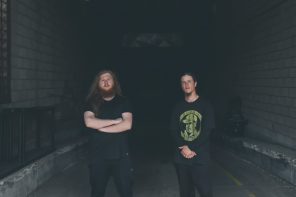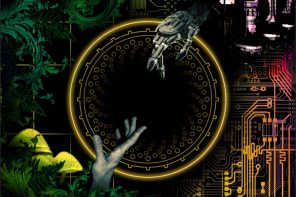The State of Indie Music
by: Zachary Citron (Zencha)
I hear all the time that music is dead and nobody pays for it anymore.
Derek Sivers, of CD Baby fame, told me in an e-mail conversation that “the music business might end up kinda’ like the poetry business is today. That is: there are a few who are able to be full time poets, but nobody would get into poetry for the money.”
It isn’t hard to back this claim up, either. Green Day’s latest release, ¡Uno!, garnered only 139,000 purchases. Deadmau5, arguably one of the biggest names in electronic music (the 6th largest DJ in the world), only reached 58,000 purchases of his latest release, >album title goes here<
Obviously, not everybody listening is paying.
Chris Lum, a famous San Francisco based, Grammy Award-nominated house artist, is struggling to stay afloat in the current state of the music industry.
“No one buys records anymore.” he states. “The idea of the ‘middle class artist’ is vanishing. It seems you’re either a broke artist who can’t make it, or Justin Beiber.”
Behind all of these facts and claims, one might be tempted to think that music is dead, and that indie artists should stop trying to make it.
If you had to ask me, though, I’d say there’s still hope as indie artists — we’re just not doing it right.
But first, let’s look at the problems of major label artists.
The primary issue is that major label artists are not personal with their fans. The reason no one buys Green Day’s music or Rihanna‘s is because they don’t have or feel a personal connection with the artist. Sure, the music might be emotional and personal to the consumer, but it’s hard to see the artist as somebody trying to bring in a paycheck.
Unfortunately, these large artists don’t have much say in the matter. In a recent NPR article, it was revealed that it cost roughly $78,000 dollars to simply write, mix, and produce “Man Down,” a hit for Rihanna.
It doesn’t end there, though.
It takes roughly another $1,000,000 to market the song. It’s 1,282% more expensive to get the song heard than it is to create it. Absolutely crazy.
My point is this — with such a large shotgun-approach to getting Rihanna’s music heard, it’s pretty much impossible for her to get personal and connect with any single fan on an individual level. No one seriously thinks they’re a part of Rihanna’s success when they purchase her newest $0.99 hit. To top it all off, unless the label recoups all of the cost associated with producing a hit, Rihanna won’t even get paid.
Ouch.
On the other hand, let’s take a look at a couple of indie artists.
Marcus D is an underground Jazz-Hop artist (a combination of Jazz instrumentation over Hip-Hop beats.) His Youtube videos rarely reach 60,000 views (compared to Rihanna’s Man Down, with 180,000,000 views) and when I mention him to people, they usually remark that they’ve never even heard of the genre he’s a part of.
He has been featured by Vogue on a playlist with the likes of David Bowie, Foo Fighters, R.E.M, and The Rolling Stones, and was even able to move to Japan as a result of his blossoming fanbase (Jazz-Hop has a strong following in the land of the rising sun).
In response to an abysmal sales report from recently signed major label (Sony) artist, Kreayshawn (who sold a paltry 3,900 units), Marcus D stated on Facebook that his second album, Melancholy Hopeful, sold more units than that.
To get some perspective, Kreayshawn’s fanpage has 587,000 fans, while Marcus D’s fanpage has 5,700. Kreayshawn sold 3,900 units. Marcus D sold at least that much. If we say both artists sold 3,900 units, then .66% of Kreayshawns fans bought her album, and 68% of Marcus D’s fans bought his album. Marcus D’s album was literally 100 times more successful than Kreayshawn’s.
Obviously, for Marcus D, a majority of the fans listening are also the ones paying.
Furthermore, not only did Marcus D sell to a larger percentage of his fanbase, but his personal net profit is nothing to be laughed at.
When Kreayshawn sells an album through iTunes, the money flows through Apple, Sony (the label), and then to her. She might not even see a dime on record sales if Sony doesn’t make enough.
Marcus D, on the other hand, makes anywhere from 80%-100% of the profit on an album sale — depending on where the fan purchases it from. If we assume he sold 3,900 units at the price of the album ($15), then he pulled in $58,500. That’s around the national median income for an average resident in the United States. Not including merch sales, shows played, licensing, and the many other avenues an artist can make income from their music.
Another indie artist, Approaching Nirvana (which is actually two dudes, Sam and Andrew), originally started by making progressive electronic dance music with a nerd/gamer appeal over the Internet. By the strength of their fans (and Kickstarter), they were able to move Sam from the West Coast to Miami, where Andrew lives.
Let’s get the numbers out of the way: Approaching Nirvana’s fanpage has 17,000 followers. They have 71,000 subscribers on their YouTube channel. They do a livestream every friday night, where Sam and Andrew perform a DJ set while their fans spectate over the Internet. Thousands of fans tune in to each of these events (they even did a livestream on New Years Eve in 2011).
Moreover, Approaching Nirvana did the music for the wildly popular and viral Minecraft Style video (a parody of Psy’s “Gangnam Style“) which surpassed 16,000,000 views.
Curious about the success of their last album, I followed them on Twitter. There are countless tweets from fans expressing their excitement when Approaching Nirvana albums and t-shirts they ordered arrive in the mail.
So, both Marcus D and Approaching Nirvana are successful with their music careers, while having drastically smaller audiences and reach than the larger artists.
Well, how are they doing this?
The first thing to notice, is that both artists have run successful Kickstarter campaigns (Kickstarter is a crowdfunding platform that allows people to post projects and have friends, family, and strangers contribute to the funding of the project).
Marcus D has funded the creation of two albums through Kickstarter, totaling $12,000.
Approaching Nirvana also completely funded Sam’s move from the west coast to Miami through Kickstarter (they raised $14,000 after asking for $10,000).
On the surface, it looks like we should all just be rushing to Kickstarter to make our music dreams and passions a reality. If we look deeper, though, we’ll notice some other way more important and fundamental ways that these artists have seen success.
First, and most importantly, make some damn good music.
Secondly, both of these artists are personal and responsive to their fans. They listen. The interaction here between artist and fan is not a one-way conversation — it’s a full-blown dialogue.
Not only does this show that the artists are legitimately interested in their fans, but it grounds them. It humanizes the artist and presents them as vulnerable human beings just like you and me.
In the 2011 documentary on happiness, aptly titled “Happy,” the creators show that one of the primary ways to be happy is altruism — the belief in or practice of disinterested and selfless concern for the well-being of others.
When a fan buys a Rihanna single, the feeling that you’re helping her succeed is absent. It’s a disconnected purchase. There’s way too much noise, marketing, and corporate distraction between Rihanna and her fans.
When a fan buys a Marcus D or Approaching Nirvana album, that feeling is strong and apparent. It’s a connected purchase. There’s little, if any, middle-men between the fan and these artists. The feeling that you’re a part of their success is evident — and it is satisfying.
You don’t get that when you buy an album from Best Buy.
Furthermore, an extension of this is that fans begin to feel like they are a part of a something — a sense of belonging.
Seth Godin has an interesting TED talk titled “Tribes” in which he discusses that modern technology, most importantly the internet, allows us to connect with people who share the exact same interests as us. If you’re passionate about hyper-hillbilly folk music, you can search it and find other people just as passionate as yourself and — here’s the kicker — connect with them.
To bridge this to music, take a look at Approaching Nirvana’s livestreams. Through their music and the internet, Approaching Nirvana is able to bring their fans together every weekend to, essentially, hang out. The fans talk to them during the DJ set over Instant Message and Approaching Nirvana talks back. The fans have immediate and obvious influence with the artists here — as well as a place to connect with other fans.
Third, these artists are focused and their audience is concretely defined.
Marcus D is a Jazz-Hop artist with a Japanese audience. Approaching Nirvana makes progressive electronic dance music with a gamer/nerd appeal. It’s obvious, in both cases, who the fans are.
The reason this focus, or “niche,” is important, is twofold.
One, the group of people that you have defined as your audience will fall behind you and your music. They will love it because it’s as if you’ve made it specifically for them. It’s not as if Marcus D is putting himself on television ads in the hopes that the masses will begin to like his music. Rather, his focus is on the people he knows will be his fans.
Two, being niche means your fanbase will be smaller than the likes of major label artists. The size of Green Days fanbase makes it impossible for them to be personal with their fans. If your fanbase is small and niche, you can actually, I truly honestly mean this, build relationships with them. They are not only your fans, but your friends. And your friends want to see you succeed.
To quickly recap, we’ve seen that indie artists can, in fact, make a living off their music (the key here being that revenue share from album sales is a much larger percentage for indie artists than major label artists). They do this by being personal with their fans, forming a tribe around their brand, and focusing on a particular niche.
Furthermore, the internet has completely dissolved all obstacles regarding the distribution of music from artist to fan. I can create a song today, submit it to Bandcamp or SoundCloud tonight, and my fans can have it immediately.
As for me, I’m taking to Kickstarter in an attempt at my own navigation of these concepts. With an explicit niche (Progressive House that sounds like Deadmau5 and Kaskade but with deeper undertones and a minimal approach — that’s focus), I want to show that indie artists can thrive and survive with the direct support of their fans. I want the indie artist to come out of hiding and into their fan’s world, and I want them to get paid for it. I want the fans to appreciate it, and I want the artists to be able to live out their dreams.
From the bottom of my heart,
Zac Citron (Zencha)
Together, we can make some amazing music. Check out my Kickstarter here.
—
Sources and Citation:
CD Sales: http://www.spin.com/articles/billboard-chart-mumford-sons-deadmau5-green-day
Derek Sivers: http://www.sivers.org
Chris Lum: http://www.moultonmedia.net/?page_id=2
“How Much Does it Cost to Make a Hit?” Rihanna’s Song: http://www.npr.org/blogs/money/2011/07/05/137530847/how-much-does-it-cost-to-make-a-hit-song
Kreayshawn Album Sales: http://rollingout.com/music/kreayshawn-album-sales/
Marcus D Article: http://www.facebook.com/photo.php?fbid=10151051367979389&set=a.69175984388.74223.37773229388&&theater
Approaching Nirvana Kickstarter: http://www.kickstarter.com/projects/556316662/help-make-approaching-nirvanas-next-album-a-realit
Kickstarter: http://www.kickstarter.com
Seth Godin TED Talk -Tribe : http://www.ted.com/talks/seth_godin_on_the_tribes_we_lead.html





